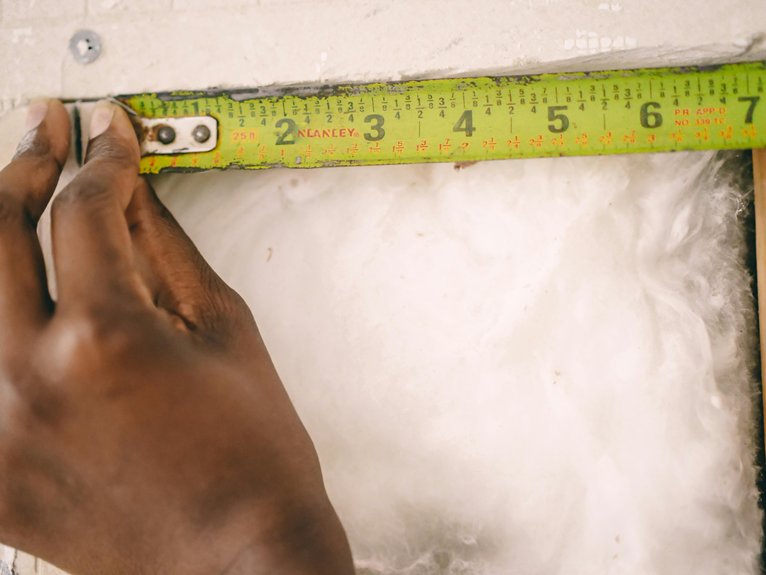Expanding foam filler is a versatile material commonly used for sealing gaps, providing insulation, and securing lightweight structures within homes and buildings. Typically made from polyurethane, it comes in both closed-cell and open-cell varieties, each suited to different applications.
Upon application, the foam expands, effectively filling cracks around windows, pipes, and wall cavities. Its strong bonding capabilities make it a popular choice for various surfaces, making it an ideal solution for DIY projects.
To achieve the best results, it is important to follow safety precautions during use. For those who wish to learn more, additional guidance on effective application techniques is readily available.
Types and Characteristics of Expanding Foam
Expanding foam fillers are available in a variety of types, each tailored for specific applications and characteristics. The majority are composed of polyurethane (PU) resins, which cure upon exposure to moisture.
The two primary categories are closed-cell and open-cell foam, each differing in structure and strength. Closed-cell foam is dense and rigid, offering exceptional moisture resistance and insulation, making it particularly suitable for exterior applications. In contrast, open-cell foam is lighter and softer, providing improved sound absorption, although it offers less insulation.
Certain foams are formulated to be minimal or low expanding, which helps mitigate pressure on delicate structures during the curing process. Additionally, there are isocyanate-free foams based on MS technology, which provide flexibility and reduced chemical risks. Many foams are also formulated to be environmentally friendly, featuring lower VOC emissions. Two-component foams mix chemicals on-site, resulting in enhanced strength and are typically employed in professional environments.
When selecting the appropriate expanding foam for your project, consider the specific characteristics and advantages each type offers to ensure optimal performance and suitability for your needs.
Common Applications and Benefits
Common applications of expanding foam fillers include sealing gaps, providing insulation, and offering minor structural support. These versatile products effectively block drafts, moisture, and pests by filling small spaces around windows, doors, pipes, and walls. They bond well to materials such as wood, brick, and metal, creating a durable seal that enhances weather resistance and can significantly reduce heat loss. Additionally, they assist in stabilising lightweight fixtures and preventing rattling pipes by filling cavities. Expanding foam can also be used to secure lightweight insulation panels, making them an essential tool in energy-efficient building projects. Examples of their applications include: – Sealing gaps around windows and doors – Insulating hard-to-reach areas and lowering energy costs – Supporting fixtures like bathtubs or plumbing – Soundproofing inside wall cavities to block noise and vibrations. Expanding foam fillers are user-friendly, making DIY repairs straightforward, and they contribute to a comfortable, energy-efficient home environment.
Safety Tips and Environmental Considerations
Safety tips and environmental considerations are vital when working with expanding foam fillers to prevent health risks and protect the environment.
Wearing appropriate protective gear is essential. This includes chemical-resistant gloves, safety glasses, and full-coverage clothing to prevent skin and eye contact with the foam. Additionally, using approved respiratory protection and ensuring good ventilation while working helps minimise inhalation of harmful vapours.
Careful handling and storage of foam products is crucial. Keep cans in a cool place, away from heat sources or open flames to avoid accidents.
Proper disposal practices are equally important. Always contain any spills with absorbents to protect water sources and adhere to local disposal regulations.
| Safety Measures | Environmental Actions |
|---|---|
| Wear protective clothing and gloves | Ensure foam does not enter water |
| Use adequate ventilation | Follow disposal guidelines |
| Store cans away from heat | Contain spills promptly |
Conclusion
Expanding foam fillers are versatile materials, with various types specifically designed for different tasks. They provide numerous benefits, including insulation, sealing, and efficiently filling gaps. When used correctly and safely, these fillers can significantly enhance construction and repair projects.
It is crucial to adhere to safety guidelines and consider environmental impacts, such as appropriate disposal methods. By understanding the characteristics and applications of expanding foam fillers, users can make informed choices. This ensures effective results while minimising risks and reducing environmental harm.
With their adaptability and effectiveness, expanding foam fillers are an essential addition to any DIY enthusiast or professional builder’s toolkit.

